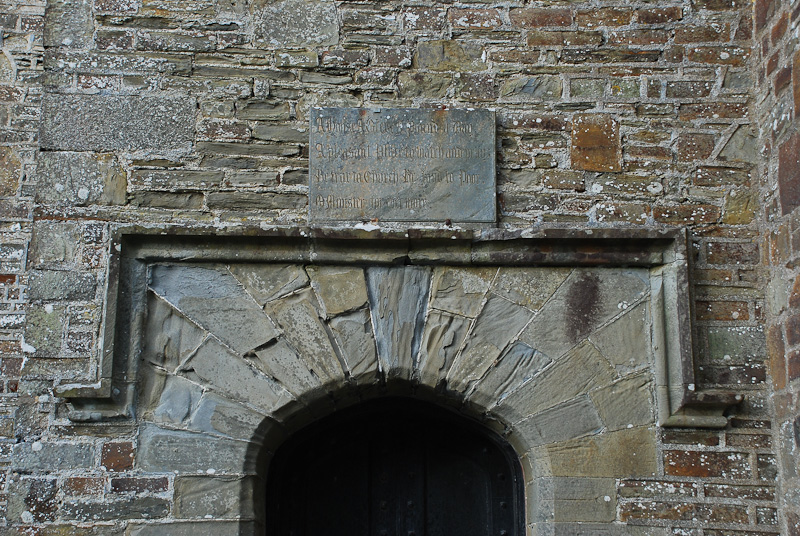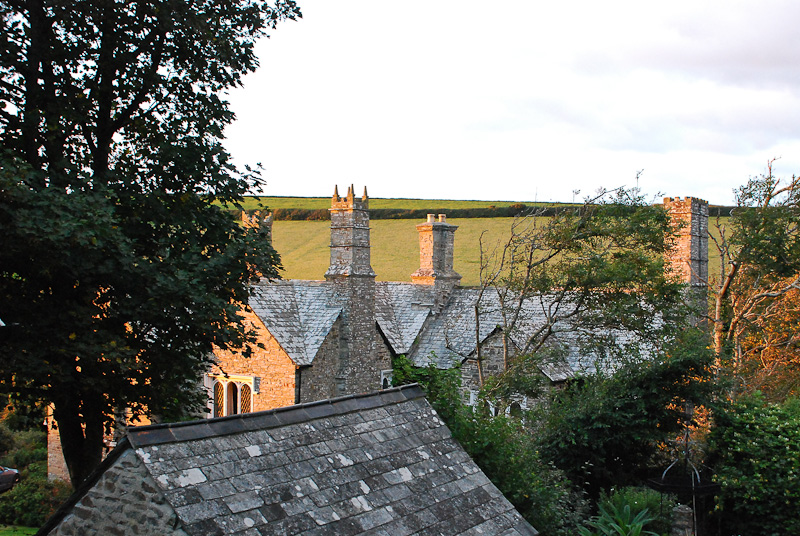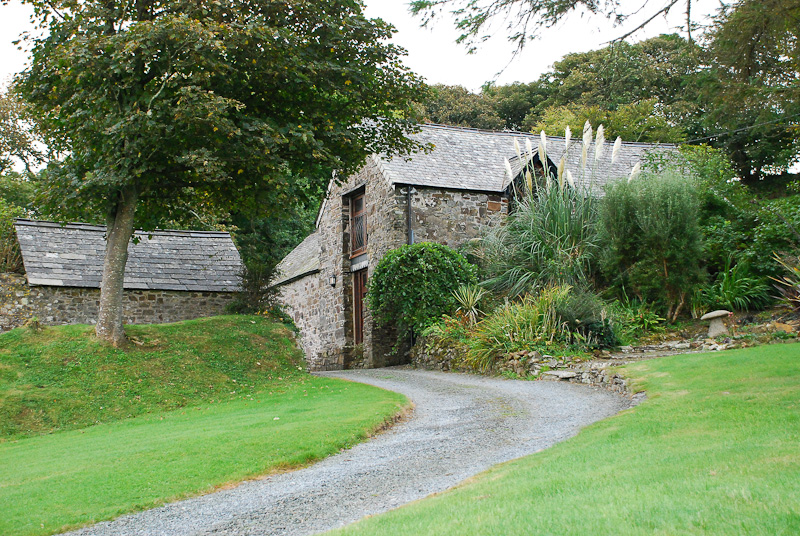When Robert Stephen Hawker came to Morwenstow in 1834 there had been no resident vicar for over a century. The old vicarage, close to the south-west corner of the church, just beyond the graveyard wall and near to the stile which now leads into the fields, was in ruins from long disuse. Hawker and his wife, Charlotte, were obliged to find a small cottage to rent, and this served as their home for the first five years.
According to his son-in-law and biographer, Charles Edward Byles, Hawker chose as the site of his house a spot where he had seen the sheep shelter in a storm.
On 25th April 1837, Hawker wrote to the Rev. H. T. Ellacombe:
My dear Sir,
… I begin my house in a few days, and if you can have access to Hunt’s ‘Designs for Parsonage Houses’, you may see a sketch of mine, for it is the first in that Series of Engravings. The Style Old English, coeval with that of a part of my Church. I find that by a sweeping abolition of fences and the old Vicarage Buildings I can contrive that my Church and Churchyard shall stand just in the centre of my future lawn. The only objects then perceptible from my two fronts will be the Church and the Sea, the suggestions of both of which are boundless…
…I will send you soon in a letter drawn on one side a scheme of one Window and a Chimney, by which a Quarry Man might pronounce on the probable cost. I hope some Hiram may be found to dwell at Bitton who may assist me with hewers of Stone if not of wood. My House will cost much. But I ought not to build a Shoppy Residence, I think, and as, like Absalom, I have no son, I will like him build me a pillar in the Bishop’s Dale that I may be had in Remembrance among men. I would fain attract too a good Man here in every future generation…
On 27th November 1837 he wrote again:
My House quoad Walls and Roof is finished. I ought to have mentioned to you sooner that by mere accident I discovered just as my Building commenced a Quarry of most excellent Freestone, gray in colour, soft at first when taken out of the Quarry so as to cut well but gradually hardening like iron. I have found four veins: one of large size I have worked, and, with the assistance of a common stone-cutter from Lanson, I have put in a good entrance door labelled with coigns, and external chimnies and a Gable on one front surmounted with a cross…
It adds to the beauty and gives an ecclesiastical feature to the Building. We have fitted up a little room in the Roof and there we spend Sundays and sometimes other days…. And now with regard to the Cherubim. Do you think that they could be carved so as to adorn an entrance gateway, one on each pier? If so I think that hereafter when I go to reside at my new Vicarage they would do for that purpose…
Hawker’s annual stipend when he became vicar of Morwenstow was £365, and he set up a tablet above the front door of his new home bearing the following inscription:
A House, a Glebe, a Pound a Day;
A Pleasant Place to Watch and Pray.
Be true to Church – Be Kind to Poor,
O Minister for evermore.
In The Life and Letters of R. S. Hawker C. E. Byles suggests that Hawker was to a great extent his own architect and quotes him as saying that, ‘The chimnies are models of Towers of Parish Churches where we before have lived’. According to Byles, three are Cornish towers: Stratton, Whitstone and North Tamerton, and two more are based on towers in Oxford. Byles dismisses Sabine Baring-Gould’s assertion that one chimney resembles Welcombe – a church that Hawker had nothing to do with until 1850. Hawker himself says that ‘The kitchen chimney perplexed me very much, till I bethought me of my mother’s tomb; and there it is, in its exact shape and dimensions’. In spite of their unusual design the large and elaborate chimneys are an attractive feature of the vicarage.
Hawker was a keen farmer and built stables, barns and outhouses on the vicarage land. The present owners of the Old Vicarage offer accommodation for guests in the main house, and have also converted Carrow’s Stable (above) into a comfortable and attractive self-catering cottage. The back windows of the cottage look out onto the churchyard and visitors are provided with plenty of reading material on Hawker and Morwenstow. (See The Old Vicarage website at www.rshawker.co.uk)
– Find out more about Hawker on the Robert Stephen Hawker website
Text and photos © Angela Williams 2010, 2011



